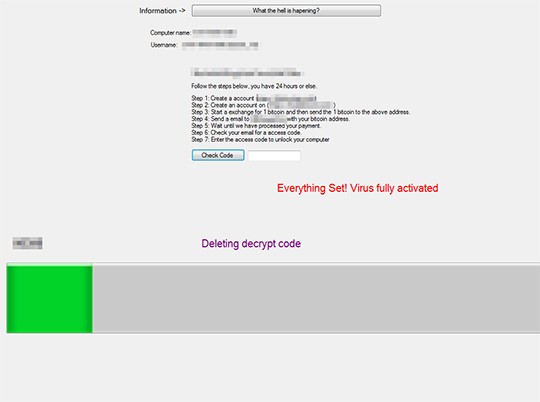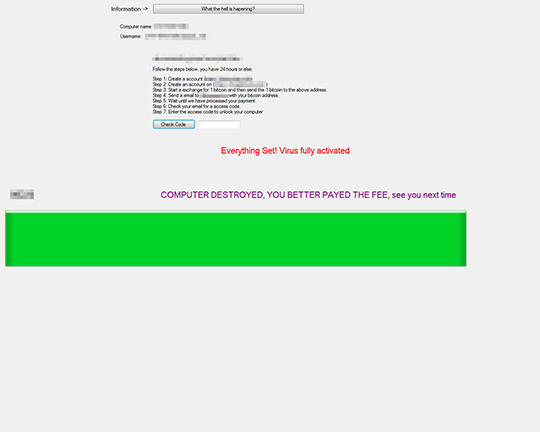RANSOM_FAKELOCK.I
a variant of MSIL/LockScreen.NS (ESET-NOD32); Trojan.MSIL.Agent.abpnt (Kaspersky);
Windows


Threat Type: Trojan
Destructiveness: No
Encrypted: Yes
In the wild: Yes
OVERVIEW
Dropped by other malware, Downloaded from the Internet
This Trojan arrives on a system as a file dropped by other malware or as a file downloaded unknowingly by users when visiting malicious sites.
TECHNICAL DETAILS
35,840 bytes
EXE
Yes
28 Oct 2016
Displays message/message boxes
Arrival Details
This Trojan arrives on a system as a file dropped by other malware or as a file downloaded unknowingly by users when visiting malicious sites.
Autostart Technique
This Trojan adds the following registry entries to enable its automatic execution at every system startup:
HKLM\SOFTWARE\Microsoft\
Windows\CurrentVersion\Run
Ransomware 2.0 = {Malware Path}\{Malware Name}.exe
Other System Modifications
This Trojan adds the following registry entries:
HKCU\Software\Microsoft\
Windows\CurrentVersion\Policies\
System
DisableTaskMgr = 1
HKCU\Software\Microsoft\
Windows\CurrentVersion\Policies\
System
RegistryTools = 1
HKCU\Software\Policies\
Microsoft\Windows\System
DisableCMD = 1
NOTES:
This ransomware does not encrypt any of your files in your computer, instead a lockscreen will be displayed. It pretends that your files are being encrypted, including a progress bar and messages that your files are being encrypted:

When it's done, your screen will still be locked as shown below:

SOLUTION
9.800
12.864.05
28 Oct 2016
12.865.00
29 Oct 2016
Step 1
Before doing any scans, Windows XP, Windows Vista, and Windows 7 users must disable System Restore to allow full scanning of their computers.
Step 2
Note that not all files, folders, and registry keys and entries are installed on your computer during this malware's/spyware's/grayware's execution. This may be due to incomplete installation or other operating system conditions. If you do not find the same files/folders/registry information, please proceed to the next step.
Step 3
Delete this registry value
Important: Editing the Windows Registry incorrectly can lead to irreversible system malfunction. Please do this step only if you know how or you can ask assistance from your system administrator. Else, check this Microsoft article first before modifying your computer's registry.
- In HKEY_LOCAL_MACHINE\SOFTWARE\Microsoft\Windows\CurrentVersion\Run
- Ransomware 2.0 = {Malware Path}\{Malware Name}.exe
- Ransomware 2.0 = {Malware Path}\{Malware Name}.exe
- In HKEY_CURRENT_USER\Software\Microsoft\Windows\CurrentVersion\Policies\System
- DisableTaskMgr = 1
- DisableTaskMgr = 1
- In HKEY_CURRENT_USER\Software\Microsoft\Windows\CurrentVersion\Policies\System
- RegistryTools = 1
- RegistryTools = 1
- In HKEY_CURRENT_USER\Software\Policies\Microsoft\Windows\System
- DisableCMD = 1
- DisableCMD = 1
Step 4
Scan your computer with your Trend Micro product to delete files detected as RANSOM_FAKELOCK.I. If the detected files have already been cleaned, deleted, or quarantined by your Trend Micro product, no further step is required. You may opt to simply delete the quarantined files. Please check this Knowledge Base page for more information.
Did this description help? Tell us how we did.

